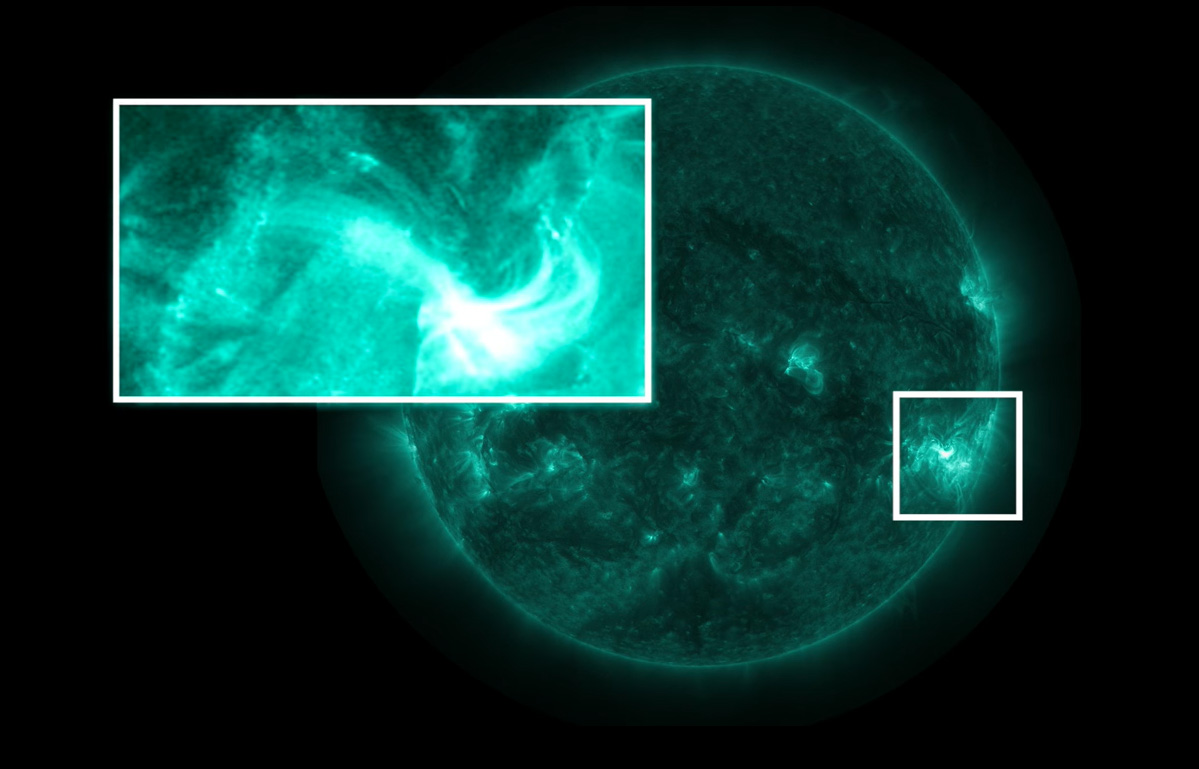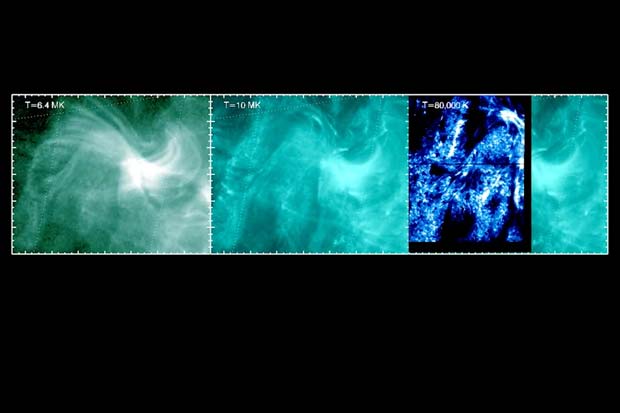Sun's Magnetic Forces Shut Down Possible Eruption (Video)
In a new video, solar observatories document the beginnings of an eruption on the sun — abruptly halted by the sun's magnetic field.
Views from multiple NASA solar observatories, including the Solar Dynamics Observatory, on Sept. 30, 2014 show the buildup and sudden teardown of the potential blast, which could have flung plasma from the sun had it continued to grow. NASA released the new video on Aug. 11 following a study on the 2014 event in The Astrophysical Journal last month.
"A filament — a serpentine structure consisting of dense solar material and often associated with solar eruptions — rose from the surface, gaining energy and speed as it soared," NASA officials wrote in a video description. "But instead of erupting from the sun, the filament collapsed, shredded to pieces by invisible magnetic forces."
This is the first time the sun has been seen tearing down such a structure, the video's narrator said. [The Sun's Wrath: The Worst Solar Storms Ever]

The new sun video was made using observations by two NASA sun-watching spacecraft (the Solar Dynamics Observatory and Interface Region Imaging Spectrograph), a NASA-funded sounding rocket and the Hinode solar observatory by NASA and the Japan Aerospace Exploration Agency.
"Each component of our observations was very important," the study's lead author Georgios Chintzoglou, a solar physicist at the Lockheed Martin Solar and Astrophysics Laboratory in Palo Alto, California, and the University Corporation for Atmospheric Research in Boulder, Colorado, said in a statement. "Remove one instrument, and you're basically blind. In solar physics, you need to have good coverage observing multiple temperatures — if you have them all, you can tell a nice story."

Coronal mass ejections fling plasma from the sun, whereas solar flares send blasts of energy and X-rays flying outward — both form based on the twists, kinks and breakages of the sun's magnetic field. Certain areas are more likely to form such eruptions; according to the video, this structure moved to a "less hospitable magnetic region" and was shredded.
Get the Space.com Newsletter
Breaking space news, the latest updates on rocket launches, skywatching events and more!
Such solar eruptions can be felt on Earth, as well as by probes elsewhere in the solar system. When aimed Earthward, they can disrupt electronics, communications and the power grid during geomagnetic storms. So understanding how the sun's magnetic field brews and dismantles them can be crucial to predicting space weather and protecting Earth's infrastructure from harm.
Editor's Note: Space.com senior producer Steve Spaleta contributed to this report.
Email Sarah Lewin at slewin@space.com or follow her @SarahExplains. Follow us @Spacedotcom, Facebook and Google+. Original article on Space.com.
Join our Space Forums to keep talking space on the latest missions, night sky and more! And if you have a news tip, correction or comment, let us know at: community@space.com.

Sarah Lewin started writing for Space.com in June of 2015 as a Staff Writer and became Associate Editor in 2019 . Her work has been featured by Scientific American, IEEE Spectrum, Quanta Magazine, Wired, The Scientist, Science Friday and WGBH's Inside NOVA. Sarah has an MA from NYU's Science, Health and Environmental Reporting Program and an AB in mathematics from Brown University. When not writing, reading or thinking about space, Sarah enjoys musical theatre and mathematical papercraft. She is currently Assistant News Editor at Scientific American. You can follow her on Twitter @SarahExplains.









